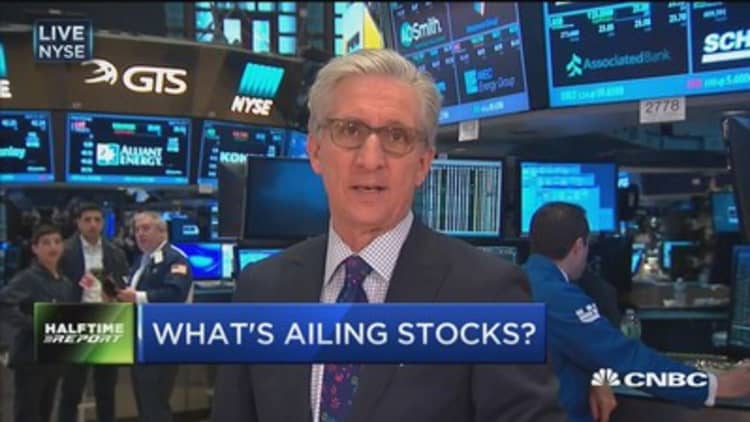
It's not like there's a panic. There has not been any intense selling pressure, but there has also been no buying interest. There's just been no real interest in the market, and you can see it in the volume: many days it has been 10-20 percent below normal levels.
What's going on? Several factors have combined to create a dangerous "stew" of uncertainty for stocks. There is not one issue, but throw them all together and you get a slow-motion, low-volume drift downward:
1) Fiscal reforms pushed out. Did you notice Trump, while in Milwaukee Tuesday, made a point of saying that, "[W]e're in very good shape on tax
2) Weaker "hard" economic data. From retail sales to the Consumer Price Index to the Producer Price Index, economic data has been weaker than anticipated. As a result, the odds for a Federal Reserve rate hike in June are now down to 44 percent, from close to 60 percent a little more than a week ago.
3) Geopolitical risks. The French election, a tougher stance on Brexit from the UK, and particularly North Korea were all background stories until the last few weeks.
4) Bond yields trending downward. This wasn't supposed to happen. The core principle of the "reflation trade" was, well, reflation. Commodity prices up. Bond yields up. Not now: after hitting multi-year highs of roughly 2.6 percent in December and March, 10-year yields dropped below 2.20 percent yesterday. True, shorter term rates have not dropped as much, but that has only flattened the yield curve, a big problem for banks who profit when the yield curve steepens. The cause is hotly debated, but it certainly reflects concerns about weaker data and geopolitical issues, and weaker bond yields in Europe have also put downward pressure on our yields as well.
5) Earnings. This is the most recent risk. Here's why: stocks are expensive. Valuations are high. The risk is to the downside. This leaves stocks very vulnerable to a selloff, particularly if there is even the slightest hint of an issue. If you don't believe me, look at what happened to Goldman Sachs yesterday, and to IBM today. IBM beat on the bottom
Huh? Say what you will about the problems of getting Watson to replace older declining revenue streams for the company, lopping $8 billion off the market cap of IBM is a pretty serious haircut. The reason: IBM had a huge run higher post-election, going from roughly $154 to $180 by mid-December, a gain of about 17 percent. But it began slipping by mid-March as the Trump Agenda magic began to fade.
Trump Agenda Fade + Revenue Disappointment + High Stock Price = sell!
Despite all this worry, the bulls still have the upper hand. The is only two percent below historic highs, and even technical analysts are not squawking too loudly — yet. Lowry, the oldest technical analysis service in the U.S., while noting that there is a "short-term correction," told investors Monday that "[T]he weight of evidence still supports a bullish intermediate term trend."
Greg Valliere at Horizon Investments mused this morning that the whole interest rate plunge issue may be "A Fake Out" that will soon reverse.
And he may be right. If we got stronger second-quarter GDP data, and the Fed did indeed raise in June, that would almost certainly push bond yields higher.
I certainly hope that is true. There's a broader issue around the economic growth data: the worry is that Q1 might represent the peak for earnings growth, which is now about 10 percent for the first quarter. We're expecting similar growth in the second quarter. But if earnings growth expectations start coming down in the second and third quarter, that will definitely impact stock prices.
Bottom line: There is a very tricky "stew" of factors affecting stock sentiment right now, and with


